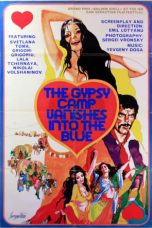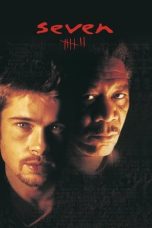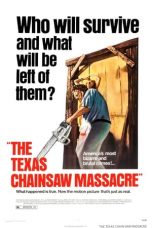- Source: Van-dwelling
Van-dwelling or vanlife is an unconventional lifestyle of living in a car, van or other motor vehicle. A person who lives in such a manner, either on a full or part-time basis, is known as a vanlifer, van dweller, car dweller or vehicle dweller. People who live this way by choice are typically seeking a more self-sufficient lifestyle characterized by freedom and mobility. They may perceive it as being a less regulated form of housing, or one that offers a lower cost advantage over standard housing, especially in regions susceptible to housing shortages. Other vehicle dwellers may be one step away from living on the street or in a shelter.
In the late 2010s, an idealized version has been popularized through social media with the hashtag #vanlife which gained significant momentum during the COVID-19 pandemic.
Etymology
Van-dwelling is a compound word that denotes the fact that motor vehicle living takes place typically, but not exclusively, in a van. Many different types of motor vehicles have been used for vandwelling, either permanently or only on a temporary basis.
A person who engages in van dwelling is known as a van dweller, car dweller or vehicle dweller. Sometimes, a car dweller is known as a car sleeper. If the residence is temporary, it may be referred to as car camping. Cars (including SUVs and cargo vans but typically not pickup trucks) with the seats folded flat/down and a mattress placed inside is referred to as "床车" in China, literally translates to "bed car".
History
The history of vandwelling goes back to horse-drawn vehicles, such as Roma vardo wagons in Europe and covered Conestoga wagons in the United States. One of the first uses of the term "vandwellers" was in the United Kingdom Showman and Van Dwellers' Protection Association, a guild for travelling show performers formed in 1889. Shortly afterwards in 1901, Albert Bigalow Paine wrote The Van Dwellers, about people living on the verge of poverty having to live a nomadic life in horse-drawn moving vans. After the introduction of motorised vehicles, the modern form of vandwelling began.
Mobile wheeled homes became popular in the US following the Great Depression in the mid-1930s as house trailers first entered mass production. This expanded availability beyond the domain of hobbyists and small-batch builders. A New York Times article in 1936 described "hundreds of thousands of families [who] have packed their possessions into traveling houses, said goodbye to their friends, and taken to the open road." Through 1960, approximately 1.5-2 million Americans acquired house trailers. In the 1960s this trend ended with the development of mobile homes, less expensive but less mobile alternatives to the earlier traveling houses.
The Hippie trail was an overland journey popular among hippies and adventurers from the mid-1950s to the late 1970s, spanning from Western Europe to West and South Asia, with travelers seeking to explore these regions cheaply while interacting with locals. It largely ended due to the Iranian Revolution and the Soviet invasion of Afghanistan in the late 1970s.
Its spirit of adventure and low-cost travel influenced the modern vanlife movement, which embraces similar ideals of freedom and alternative tourism. Today, many adventurers attempt to re-live these journeys along the ancient Silk Road and the old hippie trail.
Legality
= United States
=In the US, individuals who lack a permanent address and stable living situation, including vandwellers, are technically considered "homeless". Of the 60,000 homeless people in Los Angeles, approximately 25% were living in a vehicle.
Many municipalities have laws prohibiting overnight parking and/or sleeping in vehicles. In Los Angeles, living in a vehicle is prohibited on most streets. The city has municipal codes regarding times and places where someone is authorized to live in a vehicle. Non-profit organizations in a number of California cities sponsor "safe parking" intitiatives, which offer limited facilities and some security in designated Safe Parking lots. Some vandwellers have parked in Walmart and Cracker Barrel parking lots. In the Western United States, the Bureau of Land Management allows vandwellers and other campers to remain in many areas of their vast administration for up to 14 days at a time.
= Europe
=In Europe, vanlife legality varies by country and region. Many Western European countries, such as France and Spain, offer designated motorhome areas, providing amenities like water and waste disposal. However, urban areas often have stricter parking regulations, and wild camping is usually prohibited, particularly in protected Natura 2000 zones, which safeguard biodiversity. Vanlifers must be cautious not to park in these zones, as local authorities frequently patrol them and fines may apply.
In Northern Europe, countries like Sweden and Norway offer more freedom due to the allemannsretten ("right to roam") laws, allowing camping on uncultivated land. In contrast, Southern Europe, especially Italy and Portugal, has stricter coastal regulations to mitigate the impact of vanlife on popular tourist regions.
Van-dwellers should research local regulations and use resources like the detailed Vanlifezone map to check for Natura 2000 zones and avoid these protected areas. The map is regularly updated to provide more global resources and inspiration for better and more sustainable vanlife and overlanding experiences.
Lifestyle
The vandwelling lifestyle can allow for significant autonomy and a lower cost of living than having a mortgage or lease as in a more traditional living arrangement. Assuming they have the means, vandwellers are free to travel as much or little as they would like. Some vandwellers choose to remain in one general area, and work full-time or attend school while living in their vehicles. Others travel full-time while working remotely via the Internet or finding seasonal or short-term employment opportunities in various locations.
Since vandwelling consists of living in a vehicle with a footprint no larger than a parking space, there is usually little to no space for bathing or doing laundry. Some vandwellers in the US use gym memberships to access showers.
= #vanlife on social media
=Various depictions of the van dwelling lifestyle are presented on YouTube and Instagram, using the hashtag #vanlife — ranging from starkly realistic appraisals to heavily idealistic depictions.
The hashtag #vanlife was first used and popularized by a photoblogger named Foster Huntington in 2011. Many depictions illustrate idyllic natural scenery, sometimes framed by the open back doors of the van, or with the van prominently visible in the landscape. Others depictions feature spotless, stylized interior views of the living space. The people pictured in the images might be young, attractive and outdoorsy millennials. The depictions are often set in natural areas, particularly in the Western US as well as coastal or mountainous regions of Europe, New Zealand, or Australia.
Other notable contributors to the #vanlife movement include the Vanlife Diaries and Vanlifezone blogs and Instagram accounts. In 2019, the founders of Vanlife Diaries published a book called vanlife diaries: finding freedom on the open road which pulled content from its blog and Instagram. Vanlifezone released its first digital magazine in 2020 and has since regularly shared adventure stories from the road. The platform is designed to encourage visitors to 'get out there!' while promoting sustainability and offering insights and reports from vanlifers around the globe for a more informed vanlife experience.
During the COVID-19 pandemic, some social media users promoted the #vanlife lifestyle as a way to stay safe and avoid illness. The movement attracted many newcomers to the lifestyle including younger and more diverse people than the initial promoters of the lifestyle.
A less idealized, more stark depiction was presented in the 2021 film Nomadland.
Vehicle modifications
Van conversions consist of a wide range of possibilities. A conversion can be as simple as a few personal items thrown in the back, such as a sleeping bag or folding bed along with a few pieces of clothing, while using only the engine battery for power. It escalates all the way up to vans that function like micro-apartments on wheels with complex power setups, a kitchenette, and even simple plumbing. Vehicles like the Volkswagen Westfalia, a regular passenger van, or a cargo van, can be modified for day-to-day living by a professional conversion company. Upscale van conversion can provide most of the amenities of a conventional home including heating, air conditioning, a house battery system, a two-burner stove, a permanent bed, and other conveniences that make the vehicle fit for full-time living. School bus modifications ("skoolies") are also common among vandwellers.
Communication
Since many vandwellers lack a permanent address, they sometimes use mail forwarding services, instead of a simple post office box, in order to receive packages and other mail. This is beneficial because the forwarder can then send packages to an address which the vandweller can access. Vandwellers often pay their bills and conduct business online through the use of public Wi-Fi, which they can access at libraries or in eateries such as Starbucks.
Employment
Vandwellers will usually work seasonal jobs, ranging from national parks to warehouse jobs. Some vandwellers work only part of the year then use the money earned to travel.
Vandwellers have been known to be digital nomads who work remotely from workplace or have a job that does not require working at location. Alternatively, some vandwellers have permanent employment at Silicon Valley tech companies and choose to live in a van to both save on high rents and take advantage of generous company perks that include free food, on-site showers, and laundry service.
In popular culture
Actor Chris Farley's character Matt Foley would often describe himself "living in a van down by the river" in Saturday Night Live sketches.
Notable vandwellers
Jessica Bruder, American journalist
Alex Honnold, American rock climber
Gabby Petito, American crime victim
Steve Wallis, Canadian YouTuber
Bob Wells, American vandweller
See also
References
Further reading
Green, Penelope (31 January 2018). "The Real Burning Man". New York Times. Retrieved 3 October 2018.
Harris, Heather (5 December 2016). "The Road is My Home:" Reflections on Vandwelling Culture in the United States. DigitalCommons@Kennesaw State University. Retrieved 19 February 2019.
Kata Kunci Pencarian:
- Tokek
- Perpecahan Qais–Yaman
- Amsterdam
- Bekut lurik-merah
- Jerapah
- Pulau Somerset (Nunavut)
- Beth Moore
- Ottawa
- Kota New York
- Yesus
- Van-dwelling
- Dwelling
- Bohemianism
- Digital nomad
- Glamping
- Killing of Gabby Petito
- Overlanding
- Recreational vehicle
- Clifford the Big Red Dog (film)
- Tube-dwelling anemone
Se7en (1995)
Zombieland: Double Tap (2019)
Wake Up (2024)
No More Posts Available.
No more pages to load.














